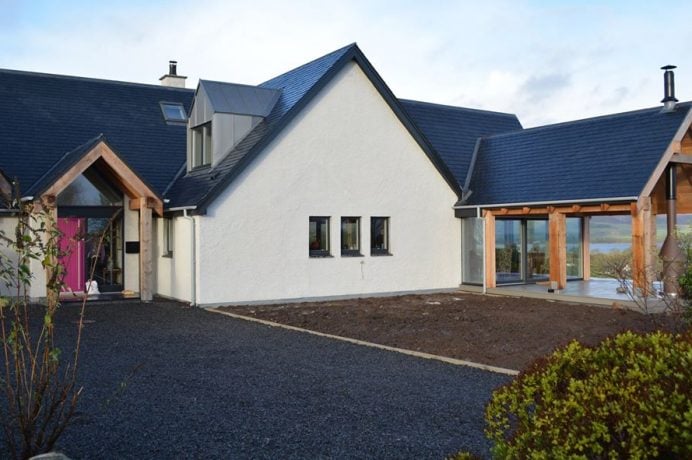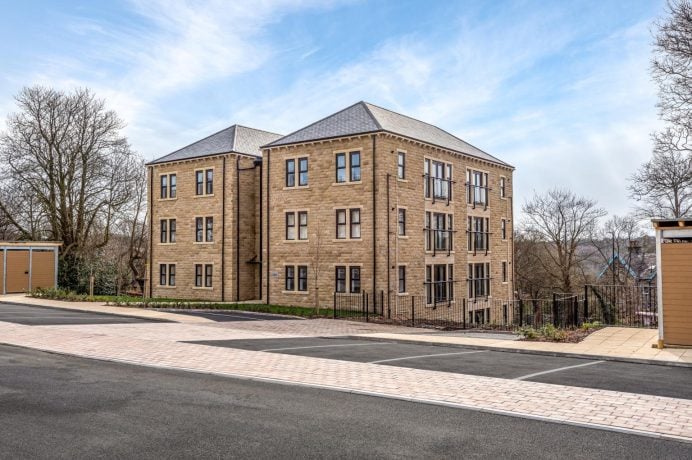EN Standards
-
Critical standards for TRA members
BS EN 14250:2010 – for Ireland I.S. EN 14250:2010
Timber structures. Product requirements for prefabricated structural members assembled with punched metal plate fasteners – Harmonised European Product StandardBS EN 1995-1-1:2004+A2:2014 – for Ireland I.S. EN 1995-1-1:2004+A2:2014
Eurocode 5: Design of timber structures. General. Common rules and rules for buildingsNA to BS EN 1995-1-2:2004
UK National Annex to Eurocode 5. Design of timber structures. General. Structural fire designNA to I.S. EN 1995-1-2:2004
Irish National Annex to Eurocode 5. Design of timber structures. General. Structural fire designPD 6693-1:2012
UK – Recommendations for the design of timber structures to Eurocode 5: Design of timber structures. General. Common rules and rules for buildings – This document provides UK national non-contradictory complementary information (NCCI) on subjects not specifically covered by Eurocode 5 such as a standard method for trussed rafter bracing on domestic roofs.SR 70 : 2015
Ireland – Timber in Construction Eurocode 5 – Trussed Rafters – This Standard Recommendation, which replaces I.S. 193:2006 (withdrawn in 2010), is intended to provide non-conflicting complementary information (NCCI) for timber trussed rafters designed in accordance with I.S. EN 1995-1-1 and fabricated in accordance with I.S. EN 14250. This information includes a standard method for trussed rafter bracing on domestic roofs.EN ISO 9001:2015
Quality management systems. RequirementsEN ISO 45001:2018
Occupational health and safety management systems. Requirements with guidance for useEN ISO 14001:2015
Environmental management systems. Requirements with guidance for use -
What is a standard and what does it do?
In essence, a standard is an agreed way of doing something. It could be about making a product, managing a process, delivering a service or supplying materials – standards can cover a huge range of activities undertaken by organizations and used by their customers.
Standards are the distilled wisdom of people with expertise in their subject matter and who know the needs of the organizations they represent – people such as manufacturers, sellers, buyers, customers, trade associations, users or regulators.
The portfolio of EN standards extends to more than 30,000 current standards. They are designed for voluntary use so it’s up to you – you’re not forced to follow a set of rules that make life harder for you, you’re offered ways to do your work better.
Standards are knowledge. They are powerful tools that can help drive innovation and increase productivity. They can make organisations more successful and people’s everyday lives easier, safer and healthier.
Eurocode 5
-
TRA Technical Committee statement on Eurocode 5 implementation - June 2018
On 1 July 2018 the UK trussed rafter industry completes the final stage of the transition to a total Eurocode 5 (EC5) design solution for its products.
On 1 January 2018, the use of the BS5268 design code was withdrawn by systems and UK fabricators for all new projects, with EC5 becoming the new reference standard.
The TRA position (which has been in place since February 2016) states:
From 1 January 2018 all TRA members will design to EC5 for new design work involving trussed rafters and metal web components. Existing BS 5268 designs may be referenced for a further six months until 1 July 2018.
To assist members, clarification of the final sentence is given as follows:
From 1 July 2018 onwards, any legacy BS 5268 roof designs for sites that have commenced since the start of 2018 will have new phases redesigned and manufactured by fabricators utilising EC5 design software.
The planning of the changeover period has meant that the majority of these legacy designs have already been migrated to EC5 compliance. It is suggested that members refer to their system provider should they require assistance with any outstanding design migration by this end date.
Les Fuller
TRA Technical Committee Chairman
1 June 2018See the sections below for further information on how EC5 design has replaced BS 5268 design within the UK regulatory framework.
-
Building Regulations - Approved Document A
Approved Document A states that the structural requirements are met by use of the structural design standards listed in Section 1, which contains reference to Eurocodes. Within section 1, subsections 1.2 and 1.6 are directly applicable to timber structures and since 2013 no longer contain any direct reference to BS 5268
Use the following link to find the relevant information for the Building Regulations – Approved Document A on pages 6 to 9
-
NHBC Standards 2018 - Structural design requirement R5
Within NHBC Standards, requirement R5 specifically states that account shall be taken of all parts of the following British Standards:
- Eurocodes and their respective National Annexs
- BS EN 1990. Eurocode 0: Basis of Structural Design
- BS EN 1991. Eurocode 1: Actions on Structures
- BS EN 1992. Eurocode 2: Design of Concrete Structures
- BS EN 1993. Eurocode 3: Design of Steel Structures
- BS EN 1995. Eurocode 5: Design of Timber Structures
- BS EN 1996. Eurocode 6: Design of Masonry Structures
- BS EN 1997. Eurocode 7 : Geotechnical Design
Requirement R5 does not contain any direct reference to BS 5268 design.
Use the following link to see the relevant information about Eurocode 5 from Chapter 2.1 of the NHBC Standards
-
NHBC Standards 2018 - Pitched roofs: Provision of Information and Design of Pitched Roofs
Within NHBC Standards, chapter 7.2 on Pitched Roofs sets out the requirements for both trussed rafter roofs and traditional cut roofs. Section 7.2.3 states that the design of pitched roofs should:
- Have dead and imposed loads calculated in accordance with BS EN 1991. Eurocode 1: Actions on Structures.
- Be in accordance with PD 6693-1:2012. Recommendations for the design of timber structures to Eurocode 5: Design of timber structures. General. Common rules and rules for buildings.
- Be in accordance with NHBC structural design requirement R5
Use the following link to see relevant information about Eurocode 5 from Chapter 7.2 of the NHBC Standards.
Specific sections covering this are 7.2.2 on the Provision of Information and 7.2.3 on the Design of Pitched Roofs.
Why Common Standards Matter ?
-
UK Position on Common Standards
As an affiliate member of BSI, the TRA supports the BSI’s position for the UK to continue having common standards with CEN (Euopean standards body) and ISO (international standards body) instead of reinstating old and withdrawn British standards applying only to the UK market.
The 8 main reasons below outline why we believe maintaining strong trade relationships with both European and other global economies is important for the timber industry. A coherent catalogue of standards improves business competitiveness, avoids further complexities and maximises business opportunities within the industry.
Download a copy of Why Common Standards Matter.
-
PAS
One standard should avoid any conflicting national standards and will also minimise barriers to trade.
The single standard model would improve business competitiveness and reduce costs. Departing from the model will result in potential duplicate work as well as increasing complexity and costs.
-
Market Simplification
The single standard model has enabled reciprocal market access throughout all of Europe.
This has resulted in a fall in the number of national standards within Europe from 160,000 in 1980 to 20,000 today. This market simplification has positive impacts on both business and customers.
-
Autonomy from EU
75% of current European standards are not linked to any European public policy or regulation.
The formal requests from the European Commission enables standards and legal text to be developed, rather than it simp ly being voluntary. This results in consistency of the use of standards both within Europe and globally.
-
Influence on Standards Development
The UK is one of the leading countries in the development of national standards.
European standards are not owned by the European Union so it is important to maintain a UK voice throughout the pro cess. UK experts supported and lead a lot of the standards for structural Eurocodes for construction.
-
Preserving UK competitiveness
If the UK industry could no longer exert influence within the European standardisation system, innovation, for example, would be jeopardised.
Therefore, it is essential that the UK has a strong involvement in the revision of existing European standards and drafting of future ones.
-
Benefits for Consumers
Standards are often looked at as a customer protection tool. They are essential for the building of customer trust, with more choice of safer and high-quality products.
The standards will also ensure that the products are sustainable and secure, a key principle for the entire timber supply chain.
-
Avoiding Proliferation of Standards
An alternative is to change the basis of the existing market structure in the UK to recognise multiple standards.
However, this will mean abandoning the internationally-used single national standard and there is fear that introducing a new system may lead to further confusion for customers as well as complexity for businesses.
-
Impact on Future Trade Agreements
There’s a large overlap between European and international standards. For example, 80% of the European standards in the electrotechnical industry being identical to the international standards.
Up-to-date standards are a key element for future free trade agreements between the UK and non-EU countries.




